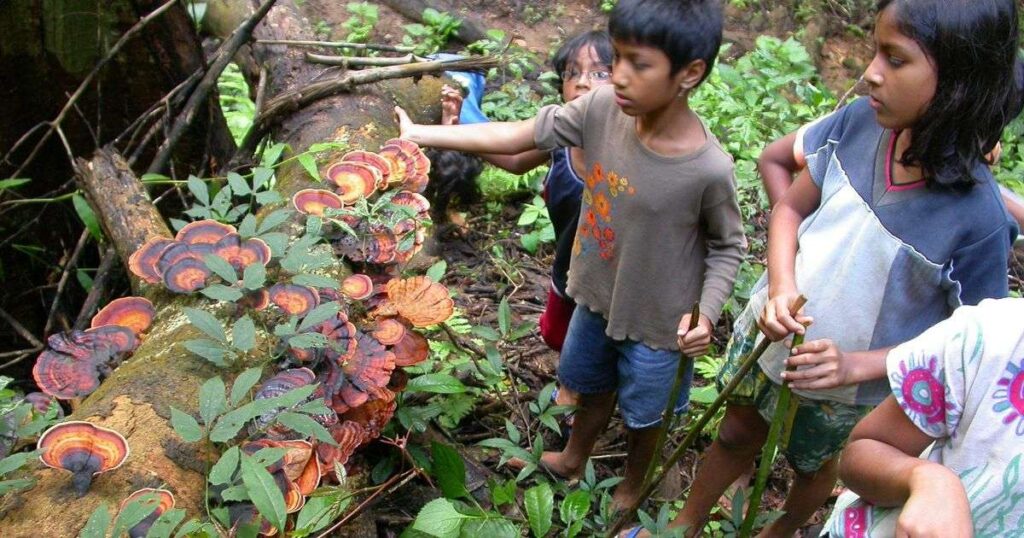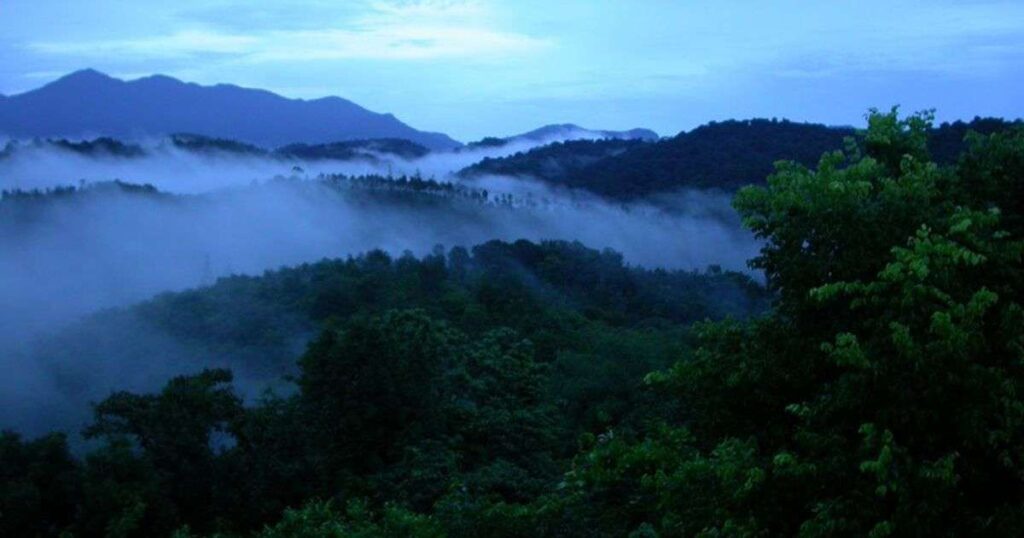The private and public lands under the Gurukula stewardship through its ecosystem gardening programmes and the community outreach initiative called the Green Phoenix, include first order stream with riparian vegetation, swampy valley fields and hill slopes of the land has been clear-felled in the past. Only 7 of the privately held acres had primary forest which had had some selective removal of large trees. Our collective has taken slow custodianship for these smallholdings a few acres at a time, and carried out various activities ranging from ex-situ conservation of Western Ghat species and rehabilitation of the same in habitats, to passive and active measures to recover degraded land to forest cover. Much of the rewilding land is left alone, and yearly lists are maintained of species presence. On 15 acres, tea has been removed. Since there are few opportunities to study what happens to land under different treatments, we believe it is important to document our wide-spectrum approach to ecological nurturance. We raise questions, intervene in small ways in a larger part of the land (60 acres), and in an intensive way in nurseries and habitats in a smaller area (15). Our concern for water bodies and to not disturb springs and swamps, and protecting land from over extraction or grazing has brought about the great diversity of species over time, and also richly varying textures of habitat. The land has powerful agents of transformation from the movement of animals, to quick spreading plants, and human beings who tend diversity, and also heavy rainfall. Mostly we are interested in asking questions and observing. Here are a few:
- In an epiphytically rich, tree sprung biome with a diverse understory, is it better to remove feral plantation crops in one shot, or is it better to phase them out, or perhaps even to leave alone?
- Are there qualia to be nurtured such as coolness, density, protection of the soil, exuberance of vegetation, buffer zones for animals to hide in? Is succession something to harnessed and worked with?
- Do microbial and fungal diversity matter?
- What about the diversity of bryophytes and pteridophytes?
- Where and how do herbaceous flora fit in?
- Which of these start the healing process?
- Since the forest has taken millennia to evolve to present day diversity and character, is time not a crucial factor also in rewilding?
Meanwhile large scale conversion and clear-felling have dramatically affected habitat conditions. Plants are apparently vigorously trying to defend themselves and the soiland ameliorate/create local climate through all this. More questions:
- When surrounded by heavily managed landscapes, is there need to rest the land as a preliminary stage of rewilding?
- Is Wedelia ( a fast speading exotic herbaceous aster) to be pulled out, or is it a deterrent to grazing, and will shade anyway not eliminate it? Is Clidemia ( a fast spreading exotic woody melastome) not dispersed by native frugivores, so, how can it be destructive?
- Are new and complex relationships (between plants and plants, trees and plants, animals and plants, fungi and others, soil microflora and others) being rapidly formed in a fast moving leapfrogging successional process?
- How do the different cultural practices shape the land over long periods of time? And vice versa?
It is a fact, that, over time the lands at Gurukula and the Kallampuzha river have become more fecund. Here is a rich surging milieu of habitats and microhabitats, with equally rich (and tangling) narratives and micro narratives.

















